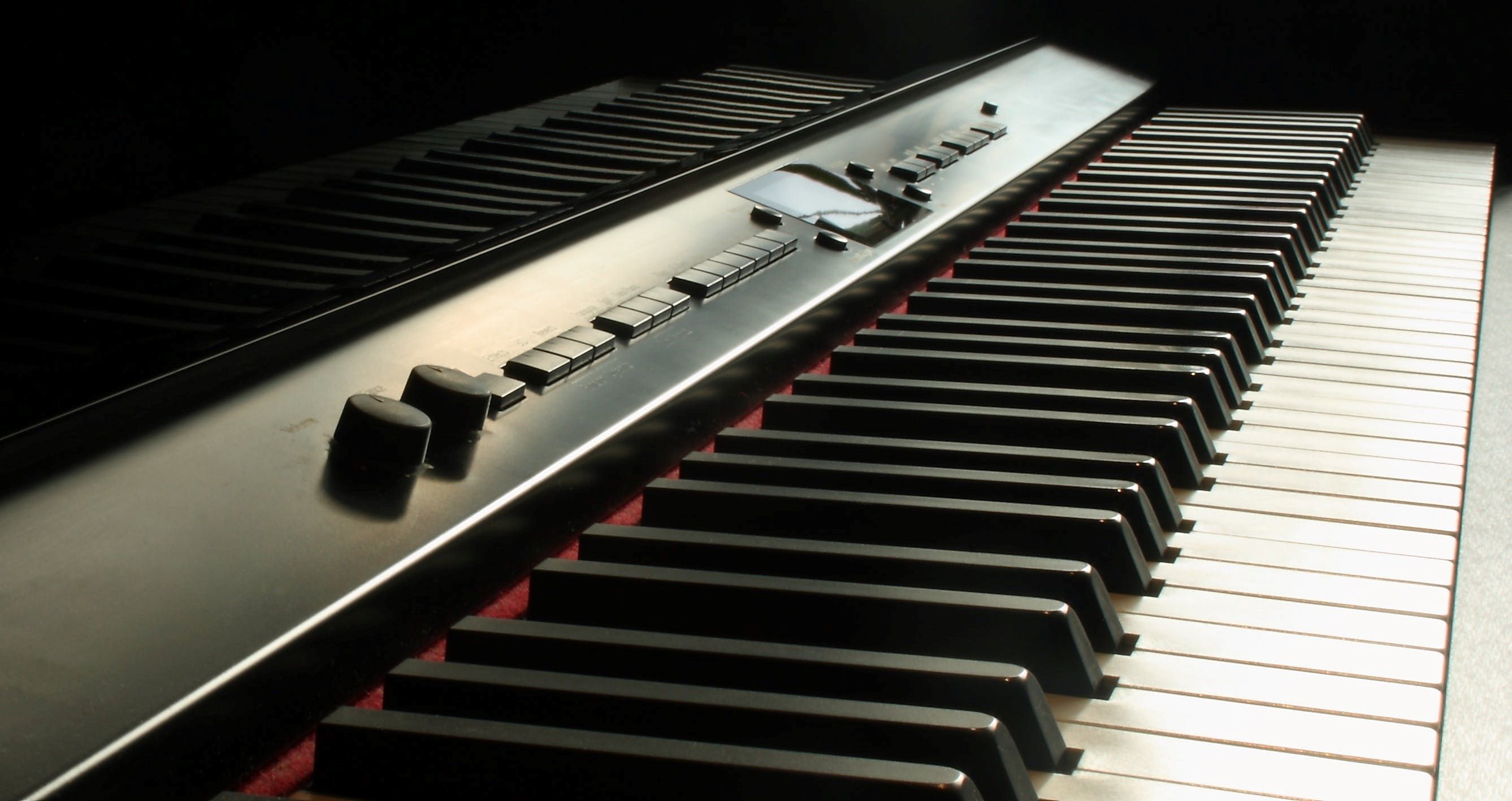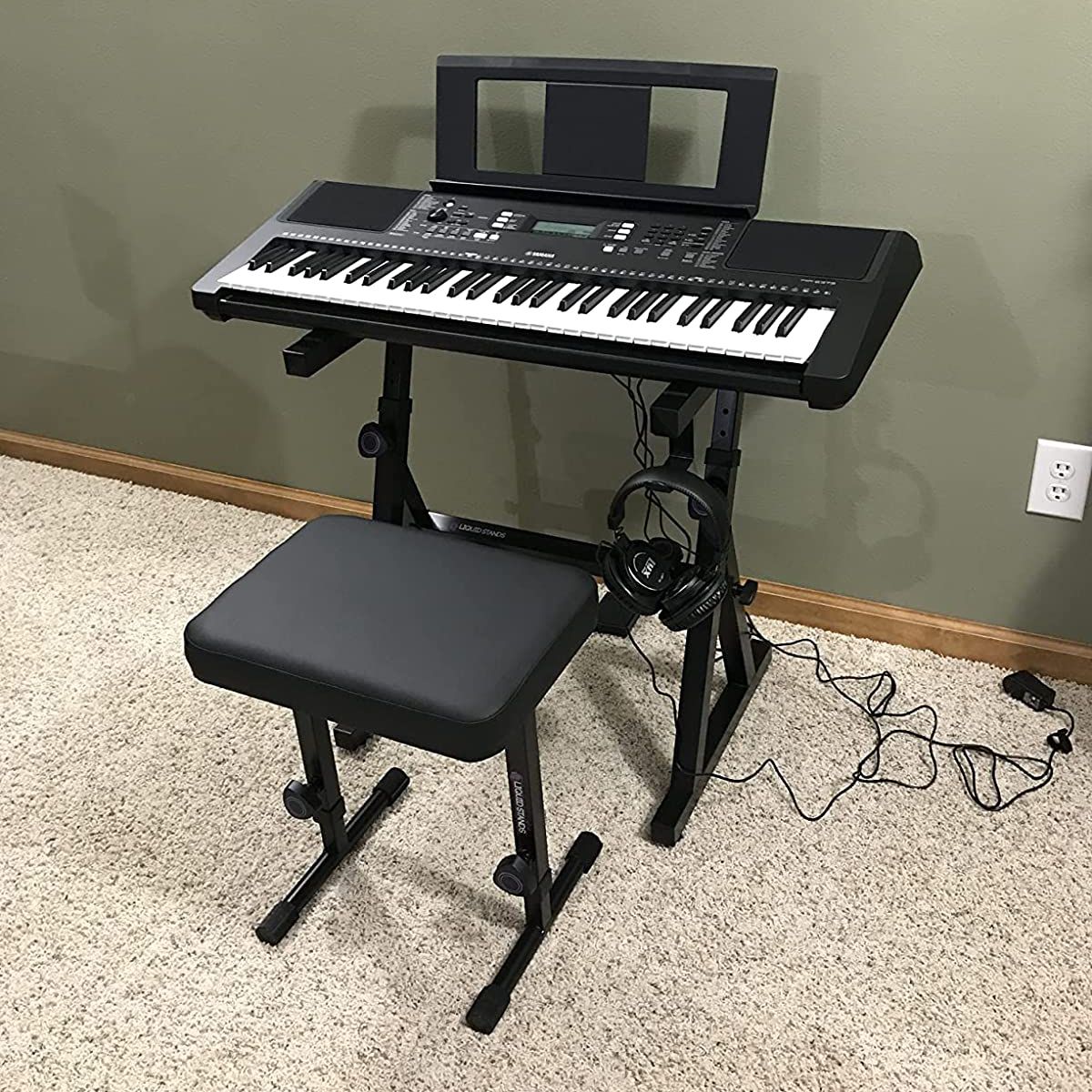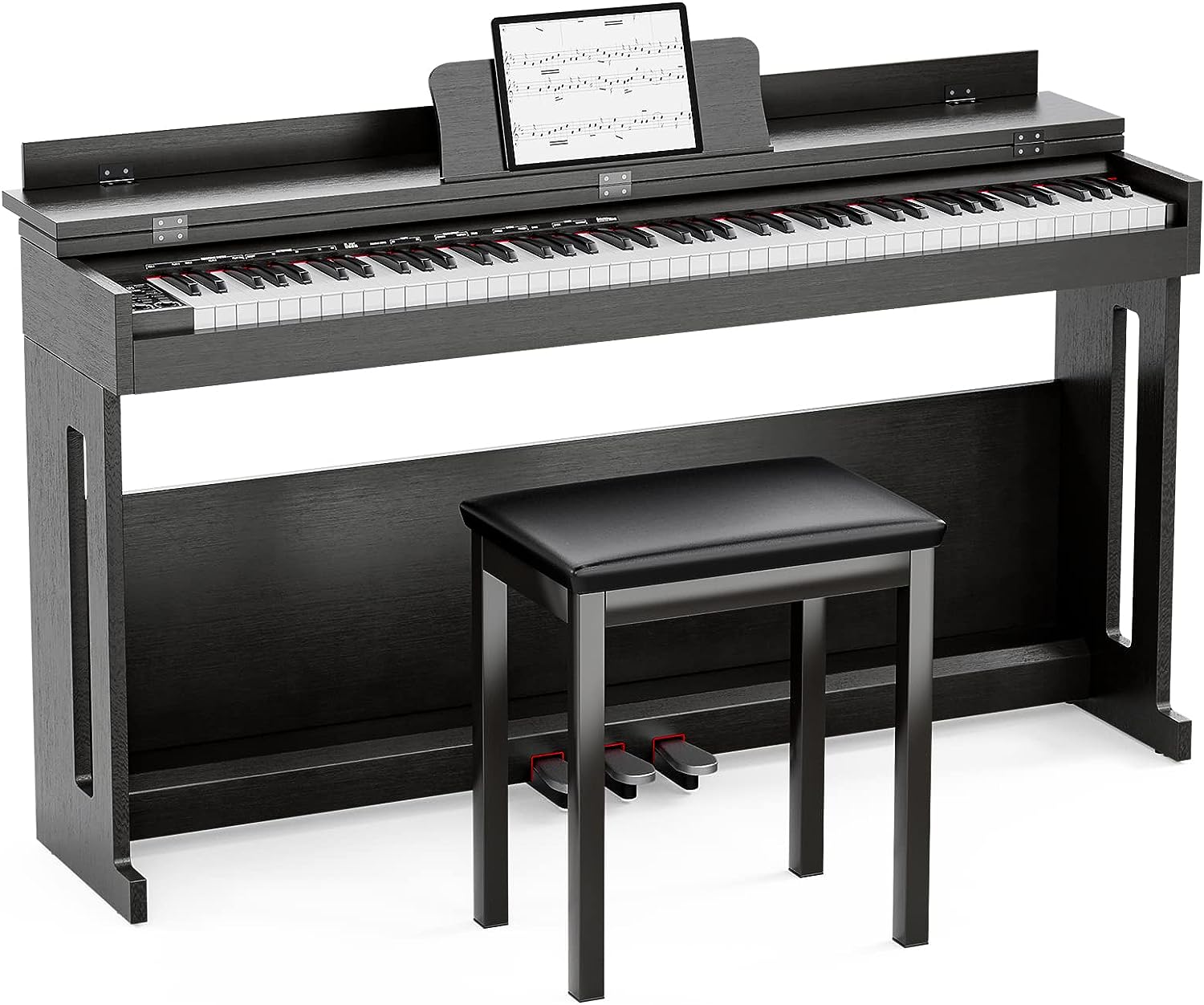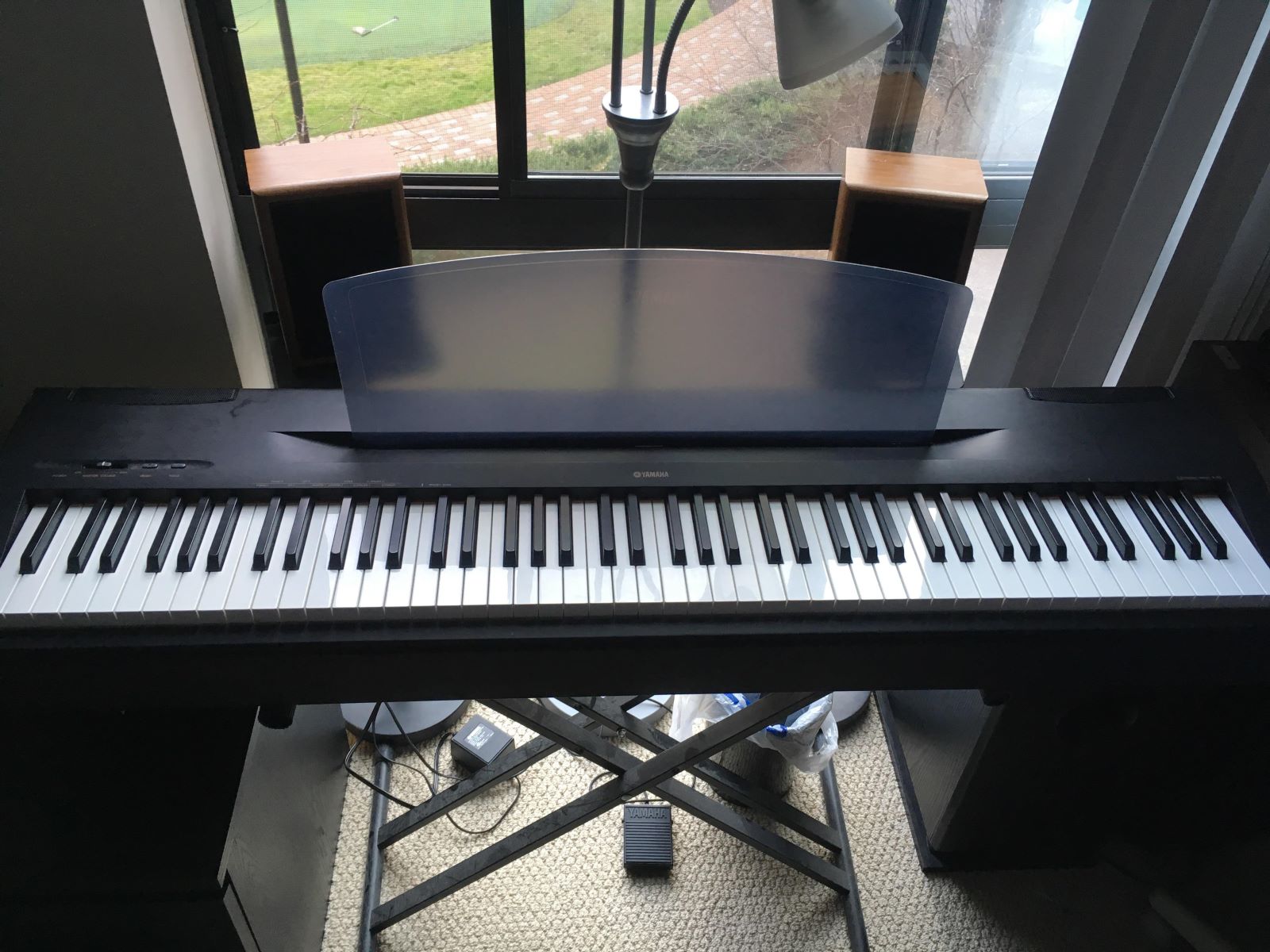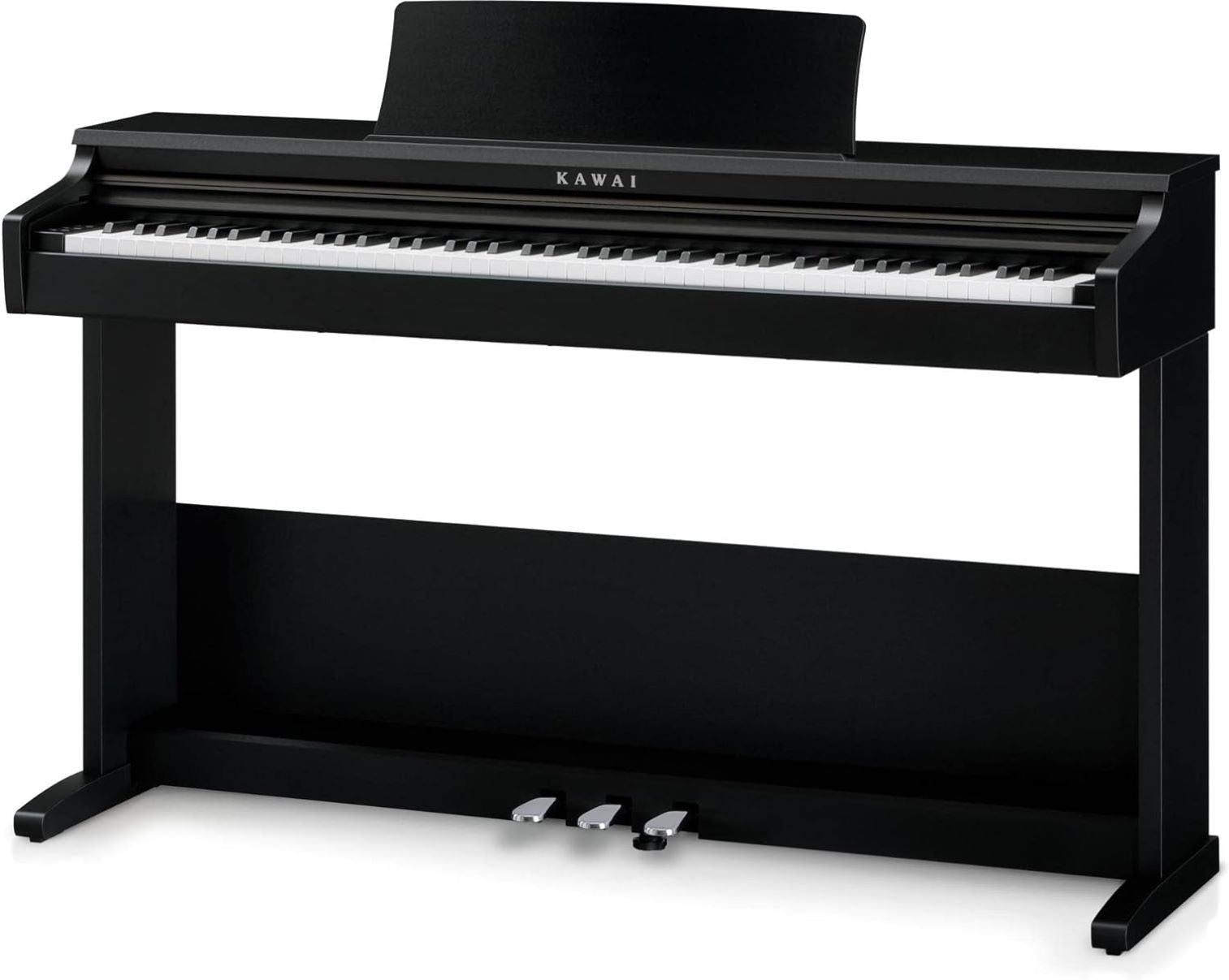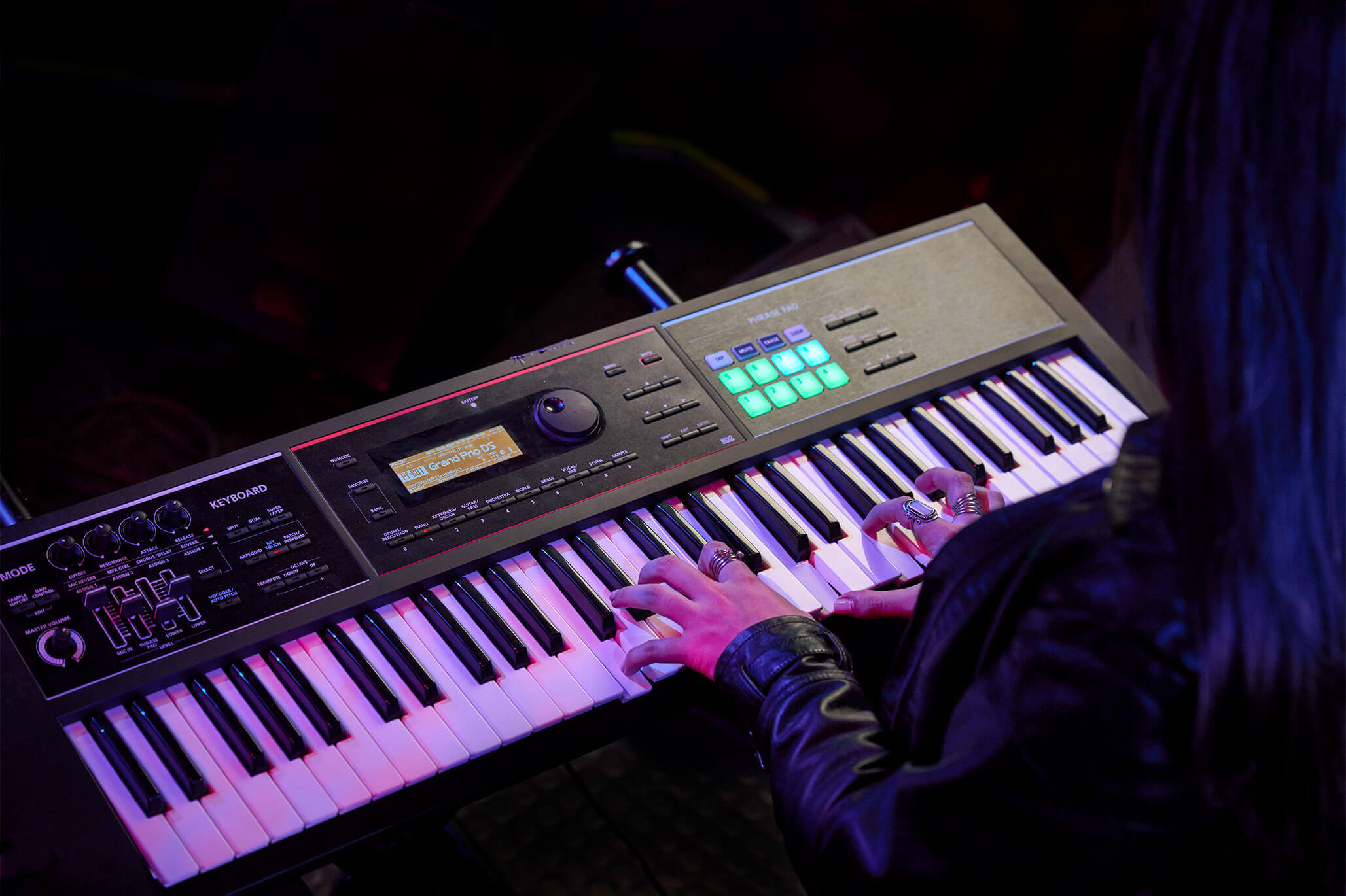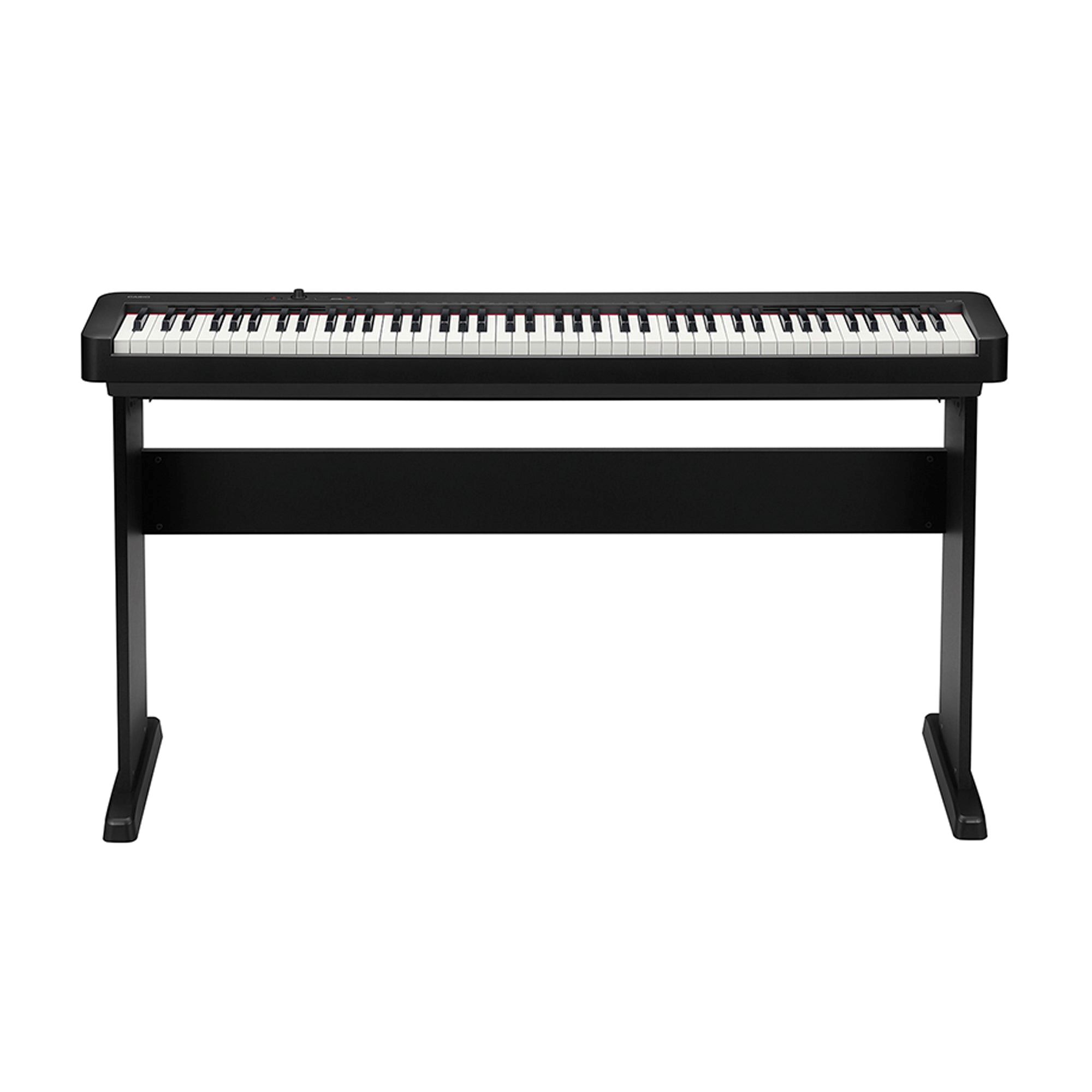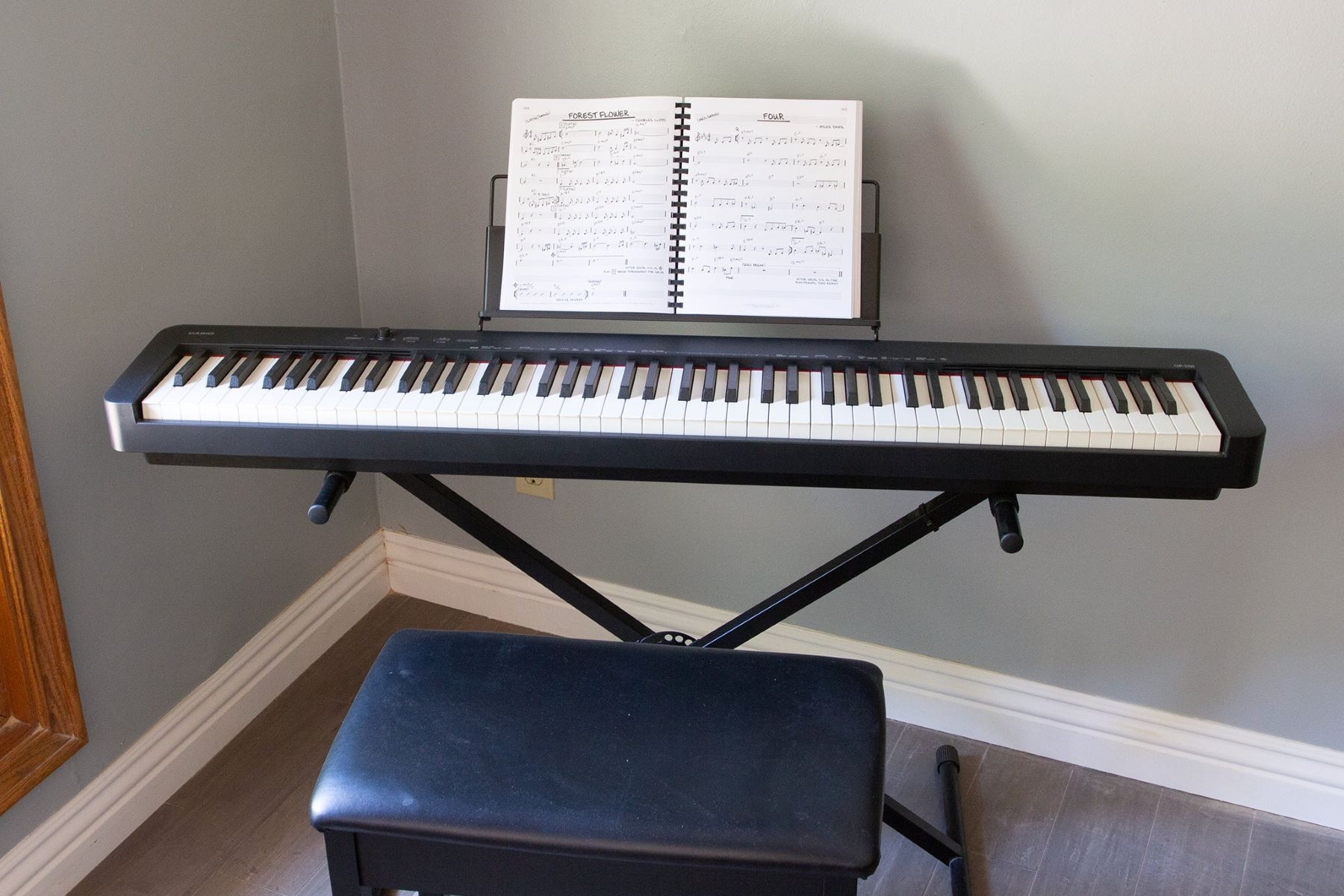Introduction
Digital pianos have revolutionized the world of music, offering a convenient and versatile alternative to traditional acoustic pianos. However, like any complex electronic device, digital pianos are susceptible to various issues that can affect their performance. One common problem that many digital piano owners encounter is rattling noises emanating from their instruments. These unwelcome sounds can be not only distracting but also indicative of underlying issues that may require attention.
In this article, we will explore the common causes of rattling in digital pianos and provide practical solutions to address these issues. Whether you are a professional musician, a passionate hobbyist, or a beginner learning to play the piano, understanding the reasons behind the rattling in your digital piano and knowing how to resolve them can significantly enhance your playing experience.
By delving into the potential sources of rattling, we can gain insight into the intricate workings of digital pianos and learn how to maintain and troubleshoot these instruments effectively. Whether the issue stems from loose internal components, damaged speakers, or external vibrations, identifying and rectifying the root cause of the rattling can restore your digital piano to its optimal condition.
Join us as we embark on a journey to uncover the mysteries of digital piano rattling and equip ourselves with the knowledge and skills to address these challenges head-on. Let's dive into the world of digital pianos and discover how to banish those pesky rattling noises for a harmonious and uninterrupted musical experience.
Common Causes of Rattling in Digital Pianos
Understanding the common culprits behind the rattling noises in digital pianos is crucial for diagnosing and resolving these issues effectively. By identifying the potential sources of the unwanted sounds, piano owners can take targeted actions to restore their instruments to optimal performance. Here are the primary causes of rattling in digital pianos:
- Loose Parts: One of the most prevalent causes of rattling in digital pianos is loose internal components. Over time, the vibrations and movements generated during playing can cause screws, nuts, or other elements within the piano to become loose. This can result in disruptive rattling sounds that detract from the musical experience.
- Damaged Speakers: The speakers in a digital piano are essential for producing high-quality sound. However, if the speakers are damaged or compromised in any way, they can produce rattling or distorted noises. This can occur due to wear and tear, excessive volume levels, or exposure to environmental factors such as moisture or extreme temperatures.
- Vibrations from External Sources: External vibrations can also contribute to rattling in digital pianos. If the piano is placed in close proximity to other vibrating objects or equipment, such as a subwoofer, the resulting vibrations can cause the piano’s components to rattle, leading to unwanted noise during play.
By recognizing these common causes of rattling in digital pianos, piano owners can begin to troubleshoot and address the underlying issues. In the following sections, we will delve into practical solutions for resolving these problems, allowing pianists to enjoy uninterrupted and pristine sound quality from their digital instruments.
Loose Parts
Loose internal components can significantly contribute to the rattling noises experienced in digital pianos. The continuous vibrations and movements generated during play can cause screws, nuts, or other elements within the piano to gradually come loose, resulting in disruptive rattling sounds that detract from the musical experience.
One of the primary areas to inspect for loose parts is the piano’s cabinet. Over time, the vibrations from playing the piano can cause the screws and fasteners holding the cabinet together to loosen. Additionally, components within the keyboard assembly, such as keybed screws and brackets, can also become loose, leading to rattling noises when the keys are played.
To address loose parts within the digital piano, it is essential to perform a thorough inspection of the instrument’s internal structure. This may involve carefully removing the piano’s casing to access the internal components. With the appropriate tools, such as screwdrivers and wrenches, the piano owner can systematically tighten the screws, nuts, and fasteners throughout the instrument. It is crucial to exercise caution and refer to the piano’s manual or seek professional guidance to ensure that the components are reassembled correctly.
Furthermore, applying a thread-locking adhesive to the fasteners can help prevent them from loosening due to the piano’s vibrations. This proactive measure can provide long-term stability and minimize the likelihood of recurring rattling caused by loose parts.
By addressing loose parts within the digital piano, owners can effectively mitigate the rattling noises and restore the instrument to its optimal condition, ensuring a seamless and enjoyable playing experience.
Damaged Speakers
The speakers in a digital piano play a pivotal role in producing high-quality sound, faithfully reproducing the nuances of the instrument’s tones and timbres. However, when the speakers are damaged or compromised, they can produce rattling or distorted noises, diminishing the overall sonic experience.
One common cause of speaker damage is prolonged exposure to high volume levels. Playing the digital piano at excessively loud volumes for extended periods can strain the speakers and lead to distortion or rattling. Additionally, exposure to environmental factors such as moisture, dust, or extreme temperatures can also contribute to speaker deterioration, impacting their performance and fidelity.
To address rattling caused by damaged speakers, piano owners can start by inspecting the speaker units for visible signs of wear or damage. This may include tears or punctures in the speaker cones, loose or detached components, or signs of moisture or corrosion. If any damage is detected, it is advisable to consult a qualified technician or the piano’s manufacturer for professional assessment and potential speaker replacement.
Furthermore, exercising caution when setting the volume levels during play can help prevent undue strain on the speakers, preserving their integrity and longevity. Adhering to the recommended volume guidelines provided by the piano’s manufacturer can contribute to the optimal performance and longevity of the speakers, minimizing the risk of rattling or distortion.
By addressing damaged speakers and adopting responsible volume practices, piano owners can ensure that their digital pianos deliver pristine and unblemished sound, free from the disruptive effects of speaker-related rattling.
Vibrations from External Sources
External vibrations can significantly contribute to the rattling experienced in digital pianos, impacting the overall sound quality and performance of the instrument. When a digital piano is subjected to vibrations from external sources, such as nearby speakers, subwoofers, or other vibrating equipment, the resulting movements can cause the piano’s components to rattle, leading to unwanted noise during play.
To mitigate the effects of external vibrations, it is essential to consider the placement of the digital piano within its environment. Positioning the piano in close proximity to powerful speakers or subwoofers can expose it to substantial vibrations, potentially leading to rattling and distortion. Therefore, relocating the piano to a more stable and isolated location, away from intense sources of vibration, can help minimize the impact of external movements on the instrument.
Additionally, utilizing vibration-dampening materials can further isolate the piano from external vibrations. Placing the digital piano on a specialized anti-vibration pad or mat can absorb and mitigate the effects of external movements, reducing the likelihood of rattling and preserving the integrity of the instrument’s internal components.
Furthermore, considering the flooring and structural stability of the room housing the digital piano is crucial. Uneven or unstable flooring can exacerbate the transmission of vibrations to the piano, amplifying the potential for rattling. Ensuring that the piano is situated on a stable and level surface can contribute to minimizing the impact of external vibrations on the instrument.
By addressing the influence of external vibrations and taking proactive measures to isolate the digital piano from disruptive movements, owners can enjoy a pristine and uninterrupted playing experience, free from the effects of rattling caused by external sources.
How to Fix Rattling in Your Digital Piano
Resolving rattling issues in a digital piano involves targeted actions to address the specific causes of the unwanted noises. By implementing practical solutions, piano owners can restore their instruments to optimal performance, ensuring a seamless and harmonious playing experience. Here are the key steps to fix rattling in your digital piano:
- Tighten Loose Parts: Conduct a thorough inspection of the piano’s internal components, including the cabinet, keyboard assembly, and other relevant areas. Using appropriate tools, such as screwdrivers and wrenches, systematically tighten loose screws, nuts, and fasteners throughout the instrument. Applying a thread-locking adhesive can provide long-term stability and prevent recurring rattling caused by loose parts.
- Repair or Replace Speakers: Inspect the speakers for visible signs of damage, wear, or deterioration. If damage is detected, seek professional assessment and potential speaker replacement to restore the integrity and performance of the speakers. Adhering to responsible volume practices can also help preserve the speakers and minimize the risk of rattling or distortion.
- Isolate the Piano from Vibrations: Evaluate the placement of the digital piano within its environment and consider relocating it to a stable and isolated location, away from intense sources of vibration. Utilize vibration-dampening materials, such as anti-vibration pads or mats, to absorb and mitigate the effects of external movements. Ensuring the piano is situated on a stable and level surface can further minimize the impact of external vibrations on the instrument.
By following these steps and addressing the specific causes of rattling in their digital pianos, owners can effectively banish the disruptive noises and enjoy a restored, pristine sound quality during play. Taking proactive measures to maintain the internal components and mitigate the impact of external vibrations can contribute to a harmonious and uninterrupted musical experience with the digital piano.
Tighten Loose Parts
Loose internal components can significantly contribute to the rattling noises experienced in digital pianos. The continuous vibrations and movements generated during play can cause screws, nuts, or other elements within the piano to gradually come loose, resulting in disruptive rattling sounds that detract from the musical experience.
One of the primary areas to inspect for loose parts is the piano’s cabinet. Over time, the vibrations from playing the piano can cause the screws and fasteners holding the cabinet together to loosen. Additionally, components within the keyboard assembly, such as keybed screws and brackets, can also become loose, leading to rattling noises when the keys are played.
To address loose parts within the digital piano, it is essential to perform a thorough inspection of the instrument’s internal structure. This may involve carefully removing the piano’s casing to access the internal components. With the appropriate tools, such as screwdrivers and wrenches, the piano owner can systematically tighten the screws, nuts, and fasteners throughout the instrument. It is crucial to exercise caution and refer to the piano’s manual or seek professional guidance to ensure that the components are reassembled correctly.
Furthermore, applying a thread-locking adhesive to the fasteners can help prevent them from loosening due to the piano’s vibrations. This proactive measure can provide long-term stability and minimize the likelihood of recurring rattling caused by loose parts.
By addressing loose parts within the digital piano, owners can effectively mitigate the rattling noises and restore the instrument to its optimal condition, ensuring a seamless and enjoyable playing experience.
Repair or Replace Speakers
The speakers in a digital piano play a pivotal role in producing high-quality sound, faithfully reproducing the nuances of the instrument’s tones and timbres. However, when the speakers are damaged or compromised, they can produce rattling or distorted noises, diminishing the overall sonic experience.
One common cause of speaker damage is prolonged exposure to high volume levels. Playing the digital piano at excessively loud volumes for extended periods can strain the speakers and lead to distortion or rattling. Additionally, exposure to environmental factors such as moisture, dust, or extreme temperatures can also contribute to speaker deterioration, impacting their performance and fidelity.
To address rattling caused by damaged speakers, piano owners can start by inspecting the speaker units for visible signs of wear or damage. This may include tears or punctures in the speaker cones, loose or detached components, or signs of moisture or corrosion. If any damage is detected, it is advisable to consult a qualified technician or the piano’s manufacturer for professional assessment and potential speaker replacement.
Furthermore, exercising caution when setting the volume levels during play can help prevent undue strain on the speakers, preserving their integrity and longevity. Adhering to the recommended volume guidelines provided by the piano’s manufacturer can contribute to the optimal performance and longevity of the speakers, minimizing the risk of rattling or distortion.
By addressing damaged speakers and adopting responsible volume practices, piano owners can ensure that their digital pianos deliver pristine and unblemished sound, free from the disruptive effects of speaker-related rattling.
Isolate the Piano from Vibrations
External vibrations can significantly contribute to the rattling experienced in digital pianos, impacting the overall sound quality and performance of the instrument. When a digital piano is subjected to vibrations from external sources, such as nearby speakers, subwoofers, or other vibrating equipment, the resulting movements can cause the piano’s components to rattle, leading to unwanted noise during play.
To mitigate the effects of external vibrations, it is essential to consider the placement of the digital piano within its environment. Positioning the piano in close proximity to powerful speakers or subwoofers can expose it to substantial vibrations, potentially leading to rattling and distortion. Therefore, relocating the piano to a more stable and isolated location, away from intense sources of vibration, can help minimize the impact of external movements on the instrument.
Additionally, utilizing vibration-dampening materials can further isolate the piano from external vibrations. Placing the digital piano on a specialized anti-vibration pad or mat can absorb and mitigate the effects of external movements, reducing the likelihood of rattling and preserving the integrity of the instrument’s internal components.
Furthermore, considering the flooring and structural stability of the room housing the digital piano is crucial. Uneven or unstable flooring can exacerbate the transmission of vibrations to the piano, amplifying the potential for rattling. Ensuring that the piano is situated on a stable and level surface can contribute to minimizing the impact of external vibrations on the instrument.
By addressing the influence of external vibrations and taking proactive measures to isolate the digital piano from disruptive movements, owners can enjoy a pristine and uninterrupted playing experience, free from the effects of rattling caused by external sources.
Conclusion
As we conclude our exploration of the common causes of rattling in digital pianos and the corresponding solutions, it is evident that addressing these issues is essential for maintaining the optimal performance and sound quality of these instruments. Loose internal components, damaged speakers, and external vibrations can all contribute to the disruptive rattling noises experienced by piano owners. By understanding the root causes and implementing targeted remedies, individuals can restore their digital pianos to a harmonious and uninterrupted state, ensuring a pristine musical experience.
From tightening loose parts within the piano’s internal structure to addressing damaged speakers and isolating the instrument from external vibrations, the proactive measures outlined in this article empower piano owners to take control of the rattling issues affecting their digital pianos. By conducting thorough inspections, seeking professional assistance when necessary, and adopting responsible practices, individuals can banish the unwanted noises and revel in the pure, unblemished sound produced by their digital instruments.
Ultimately, the journey to fix rattling in digital pianos is a testament to the dedication and care that piano owners invest in preserving the integrity and performance of their beloved instruments. Through diligence, attentiveness, and a willingness to address potential issues, individuals can ensure that their digital pianos continue to enrich their musical endeavors with flawless sound and unwavering quality.
As piano enthusiasts embark on this journey, armed with the knowledge and insights shared in this article, they can confidently navigate the intricacies of digital piano maintenance and emerge victorious in their quest to eliminate rattling and embrace the pure, unadulterated beauty of music.







